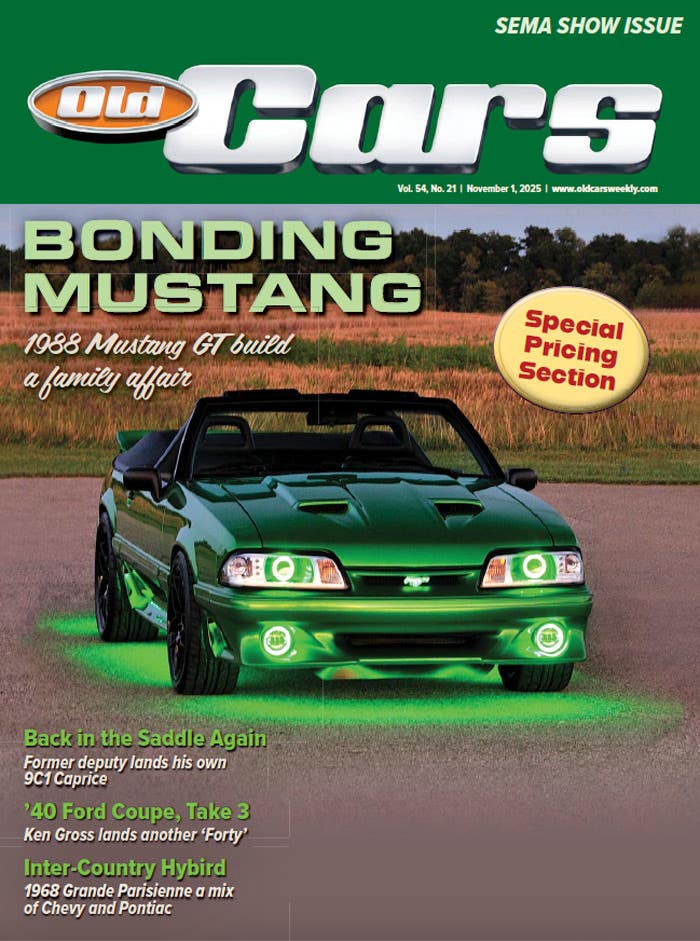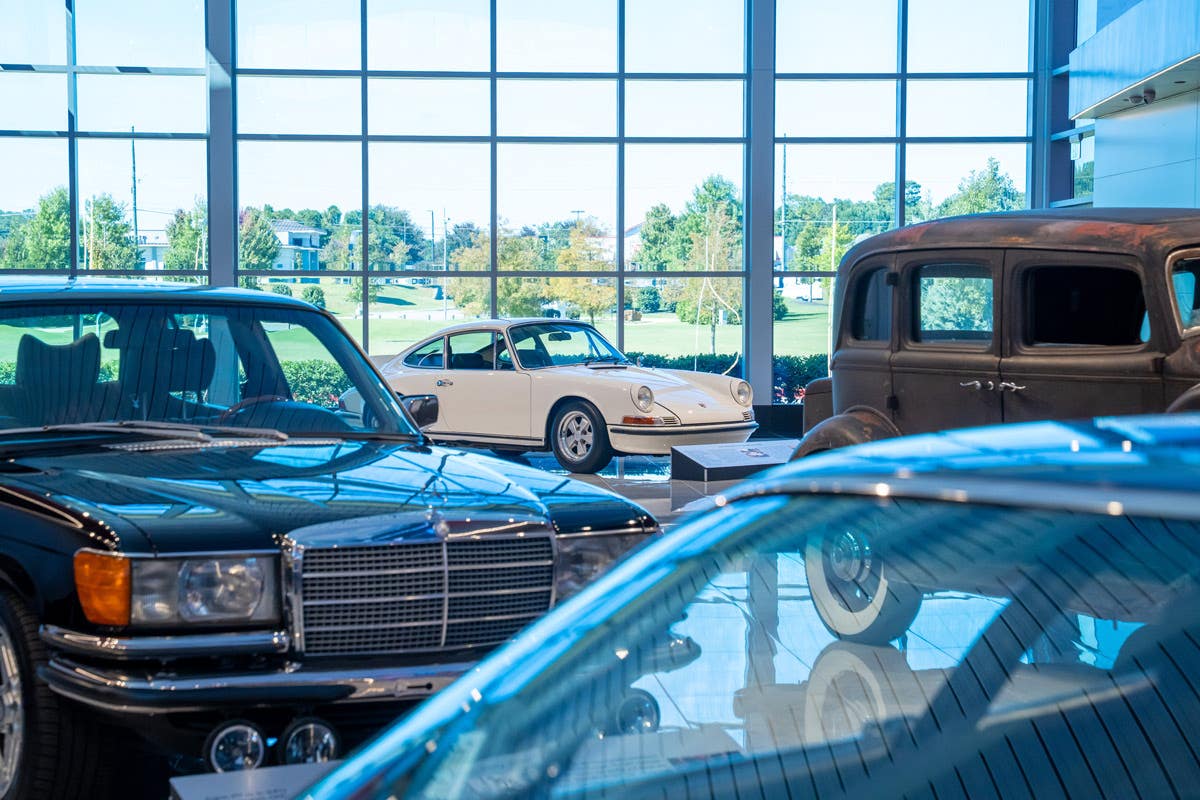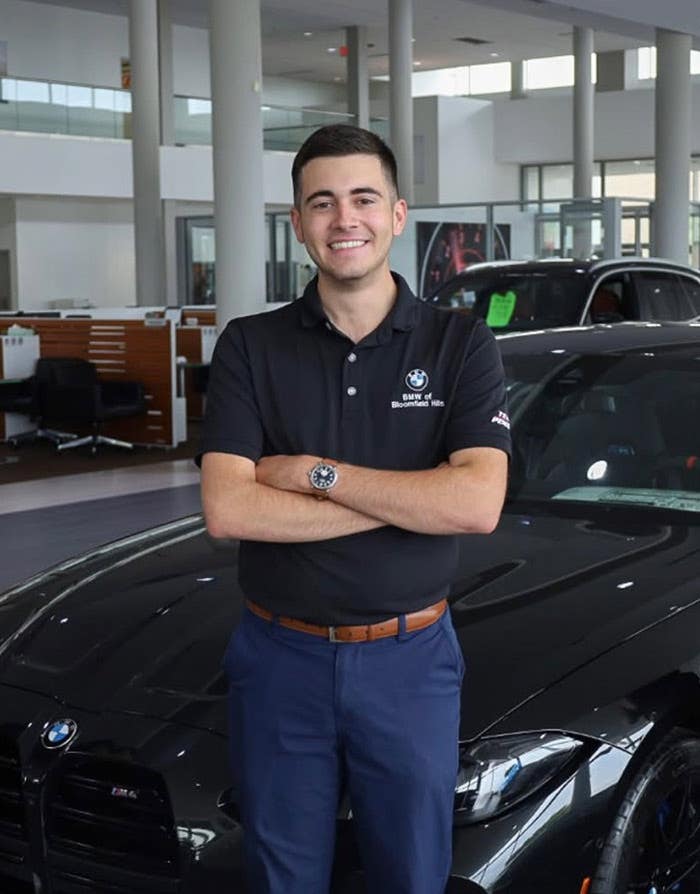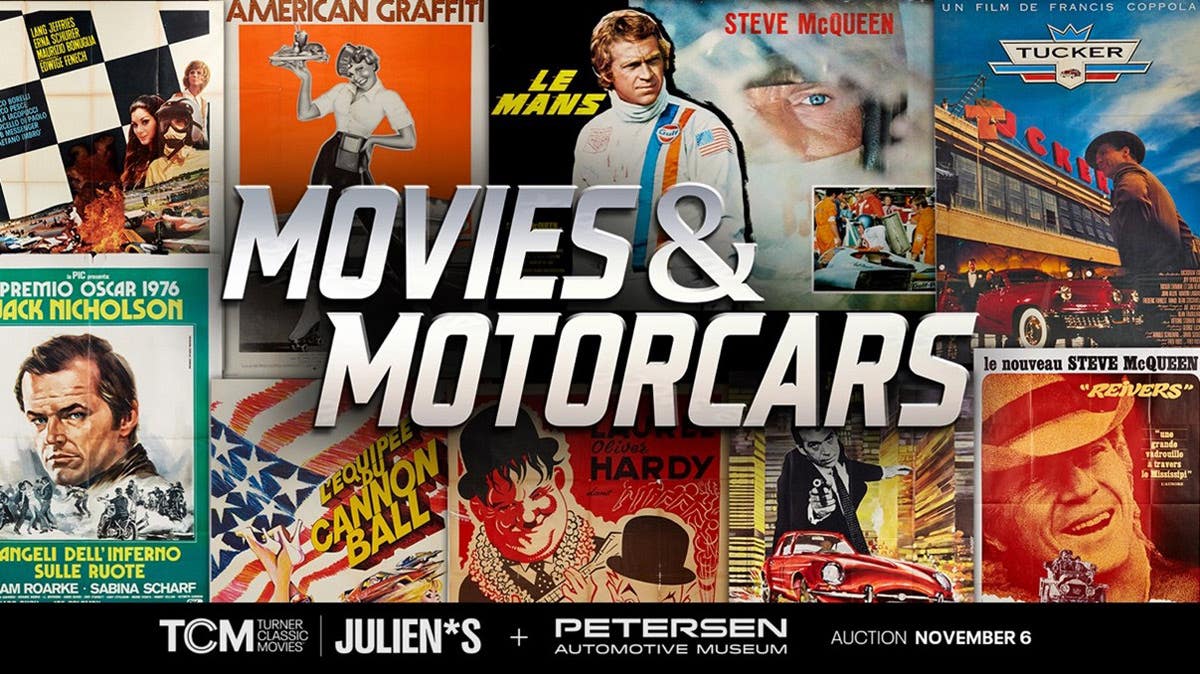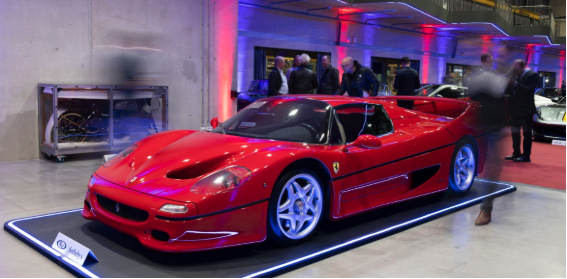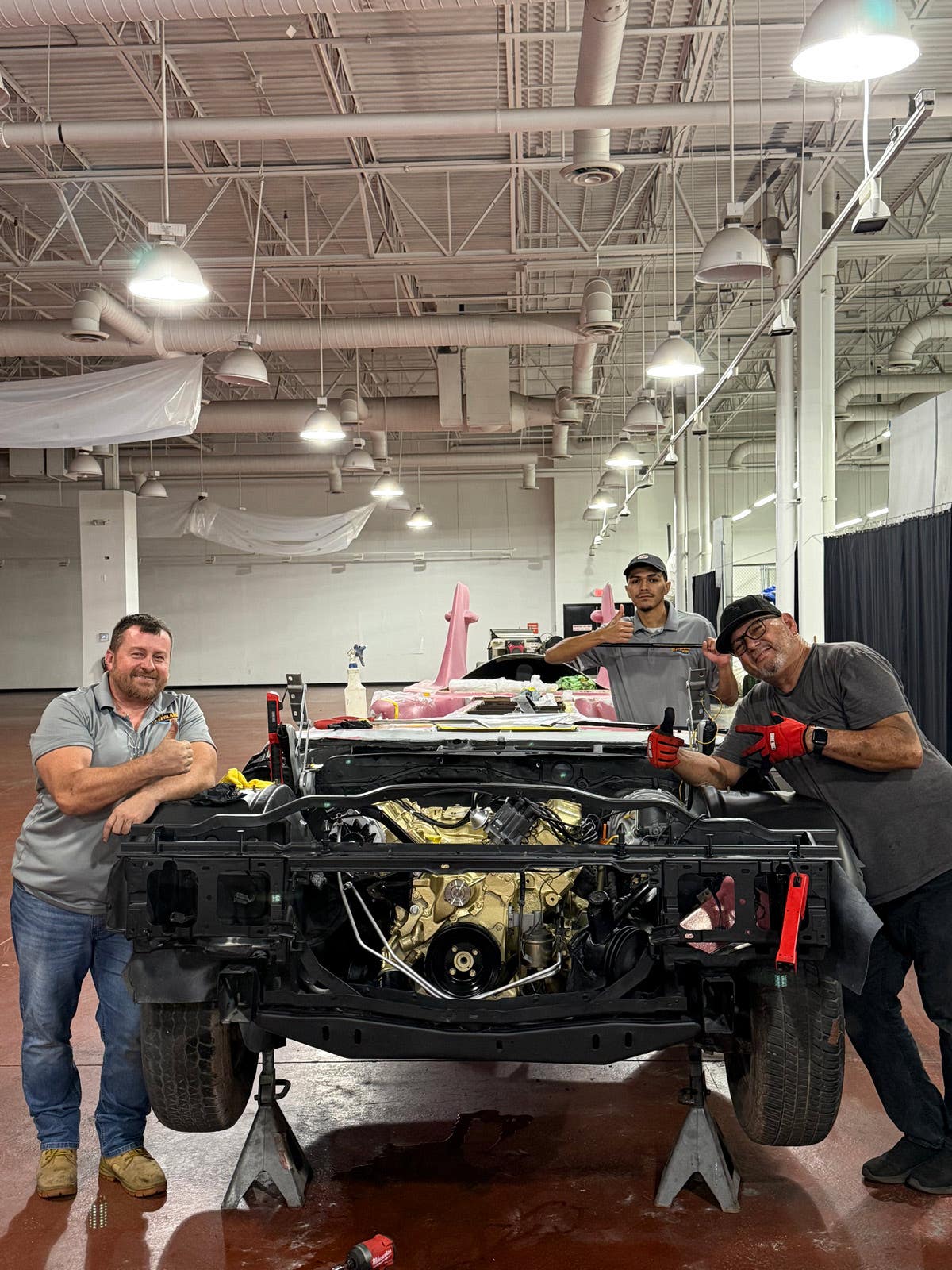IOLA 09 salutes independents & imports
“Independents and Imports — Alternatives to the Detroit Three” is the theme of the 37th annual Iola Old Car Show and Swap Meet.
By Phil Hall, Wisconsin Society of Auto Historians
It’s not unusual to spot a Cord L-29 at the Iola Old Car Show.
“Independents and Imports — Alternatives to the Detroit Three” is the theme of the 37th annual Iola Old Car Show and Swap Meet. Vehicles from America’s rich heritage of independent manufacturers and those from other lands make up the feature tent and display area during the July 9-12 event in Iola, Wis.
When the Wisconsin Chapter of the Society of Automotive Historians came up with the 2009 theme in 2007, the current plight of the “Detroit Three” (General Motors Corp., Ford Motor Co. and Chrysler LLC) was not apparent. By no means is the show theme this year intended to show disrespect for the “Detroit Three.”
Independents haven’t been the central theme of the Iola Old Car Show since 1995. With their number dwindling in the past 14 years, adding collectible imports to the theme area was done to boost the number of feature vehicles on display.
While import vehicles have been welcome in the feature area the past few years, this is the first time imports, in general, have been part of the theme. However, it is not the first time an import model has been the theme vehicle. We have to go back to 1990, when Ford Model T’s and British MG T-Series were the featured cars.
A highlight of the independent feature display will be members of the Kaiser Frazer Owners Club International holding their Midwest meet at the Iola show. If you see more than the usual number of Kaiser, Frazer, Henry J and even Allstate vehicles, now you know why. Talk to the owners and learn about their cars and their club.
On the domestic independent side, we are referring to vehicles that were not part of the “Detroit Three.”
Ford Motor Co. traces its start to 1903, General Motors to 1908 and Chrysler Corp. to 1924. With thousands of brands of cars and light-duty trucks being classed as independent, our references here will be minimal compared to the wide expanse of automotive history.
Though the final entry list is far from known at the time of this writing, it is likely that the majority of independents in the feature area will be the post-World War II variety. It is also likely that a few in the display will not be mentioned.
Looking at the postwar possibilities, independent cars are open to those from American Motors Corp., Studebaker-Packard, Kaiser-Willys, Crosley, Checker and limited-production vehicles such as Excalibur, Avanti, Cunningham, Kurtis, King Midget and the like.
American Motors was formed in 1954 combining the assets of Nash and Hudson. The last Nash- and Hudson-branded cars were 1957 models and the last AMC vehicle was the 1988 Eagle. AMC was folded into Chrysler Corp. in 1987.
Studebaker-Packard joined forces in 1954. The last production Packard was the 1958 model, and Studebaker’s finale took place in Canada in 1966.
Kaiser-Frazer started production with all-new postwar 1947 models. Frazer’s 1951 models were the last. That was the same year the compact Henry J came to market. An Allstate-badged version was sold through Sears Roebuck stores for 1952 and 1953. In 1953, Kaiser merged with Willys Motors, which had been producing Aero Willys passenger cars starting in 1952. After a rough time, Kaiser and Willys passenger-car production ended in this country in 1955. Tooling was shipped to Argentina and both continued for several years.
Crosley was Powell Crosley’s dream of selling small cars through appliance dealers. The first were 1939 models, and after a break for the war, the last were offered in 1952.
Checker Motors started building taxicabs in 1922 and tried the civilian passenger-car market starting in 1959. Production of both ended in 1982.
Sponsored by:
Avanti Motors spun off the Studebaker Avanti coupe after Studebaker ended production in the United States and went through a number of corporate and model changes which may or may not be at the end of the line.
Prewar domestic independent offerings ranged from basic transportation to the ultimate in luxury. Auburn, Cord and Duesenberg rank today at the prestige pinnacle, but don’t tell that to collectors of Packard, Peerless, Pierce-Arrow, Stutz, Mercer and Marmon. Wisconsin’s Kissel is legendary in the Badger State, especially in its hometown of Hartford.
Among the prewar marques at the show is Graham, which will be represented by Wisconsin author Mike Keller, who has written two definitive books on the subject.
Others hoped for include Reo, air-cooled Franklin, Hupmobile and Stanley.
Sponsored by:
Cars are only part of the independents’ story. Light-duty trucks always add variety. Among those possible are Studebaker, Diamond T, International-Harvester, Divco, Willys and Jeep.
Jeep’s story is one of mixed parentage. It started within Willys, was built during World War II by Ford, came under Kaiser ownership in 1953, was sold to American Motors in 1970, then shuffled off to Chrysler Corp. in 1987. After that, it was a product of DaimlerChrysler, Chrysler LLC and is now under the guidance of Fiat of Italy.
Several independent car manufacturers dabbled in trucks at one time or another, including Packard, Nash, Hudson, Kissel and Crosley, just to name a few.
Trying to get a handle on import brands that may find their way to Iola is even more scattergun than the independents. Vehicles range from the smallest (BMW Isetta, Messerschmit) to ultra luxury/performance (Rolls-Royce, Bentley and Lamborghini). As with the independents, the majority will be postwar examples.
Sponsored by:
When the theme was being discussed, there was a fear we would be overrun with Japanese imports, such as Toyota, Datsun, Honda or Mazda. With a cutoff year of 1979 and the number of restored examples of those brands in the Midwest minimal, the vast majority of feature cars will come from Europe. Sports and economy cars are the mainstay from the continent.
In no particular order, cars from Great Britain could include Jaguar, MG, Triumph, Austin (and Austin-Healey), AC, Morgan, Morris, Lotus, Sunbeam, Jensen, Riley and Metropolitan (which has dual citizenship, being an American Motors product).
The most popular car from Germany is the Volkswagen, which has a huge following in this country, complete with VW shows from coast to coast. VW vans are a culture on their own. Other popular German products include Mercedes-Benz, BMW, Porsche, Audi/Auto Union/DKW, Opel and NSU.
Italian sports cars are legendary around the world with brands such as Ferrari, Maserati, Alfa-Romeo and DeTomaso among them. When Fiats were sold here after the war, they ranged from tiny (500) to sports cars (X1/9).
Solid and dependable Saab and Volvos from Sweden have their followings here. Both today are owned by the “Detroit Three” (more or less), but 1979 and earlier examples were free of the connection.
France has had spotty success in the United States. Some prewar Bugatti, Talbot, Renault and Delahaye models are Classics. After the war, we went through Renault, Peugeot, Citroen and Simca products. But all are long gone from our shores. Renault teamed with American Motors for awhile in the 1980s, making the Alliance and Encore also dual citizens, though collectors of the pair are few in number.
Light-duty trucks were in the import mix many years, though some came here in small numbers. A few examples are Volkswagen, Morris, Land Rover, Datsun and Toyota.
With a theme as varied as Independents and Imports this year, chances are excellent you will see vehicles in the feature area that you didn’t know existed. Also, if you own one of the makes on display and thought you were the only one on the planet with your obsession, you now know you have company — enjoy!
CLICK HERE to tell us what you think in the Old Cars Weekly Forums
CLICK HERE to view the 2009 Iola Old Cars Show & Swap Meet Directory



